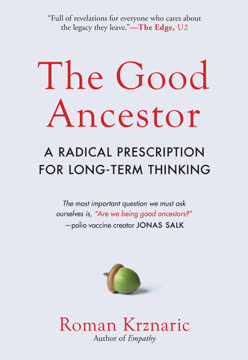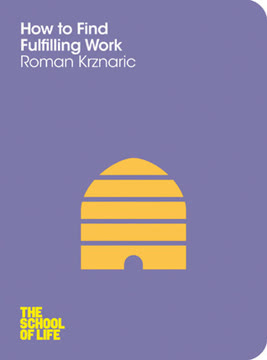Key Takeaways
1. Embrace Deep-Time Humility to Transcend Short-Termism
We must accept the reality that our personal stories from birth to death, and all the achievements and tragedies of human civilization, will barely register in the annals of cosmological time.
Cosmic Perspective. Deep-time humility involves recognizing the insignificance of human existence within the vast expanse of cosmic history. This perspective shift helps to counter the pathological short-termism prevalent in modern society, where attention is narrowly focused on immediate concerns. By understanding our place in the grand scheme, we can better appreciate the long-term consequences of our actions.
Overcoming Temporal Myopia. The tyranny of the clock, digital distractions, and the acceleration of modern life contribute to a culture of short-term thinking. To combat this, we must actively cultivate a sense of deep time through art, metaphor, and experiential journeys. These practices allow us to grasp the immense timescales involved in cosmic and geological history, fostering a sense of humility and responsibility.
Practical Applications. Experiencing deep time can be achieved through various means:
- Visiting geological sites to witness the Earth's history firsthand
- Stargazing to contemplate the vastness of the universe
- Engaging with deep-time art installations like the 10,000 Year Clock
- Reflecting on the lives of ancient trees that have witnessed centuries of change
By embracing deep-time humility, we can expand our temporal horizons and make decisions that benefit future generations.
2. Cultivate a Legacy Mindset to Benefit Future Generations
Becoming a good ancestor is a formidable task.
Beyond Personal Gain. A legacy mindset shifts our focus from personal achievements and familial inheritance to the well-being of all future people. This involves considering how we will be remembered by those we will never meet and striving to leave a positive impact on the world. It requires a conscious effort to act in ways that benefit future generations, even if it means sacrificing short-term gains.
The Death Nudge. Reminders of our mortality can prompt us to consider our legacy and make decisions that benefit future generations. Studies show that people who are encouraged to think about their personal legacy are more willing to donate to future-oriented causes. This highlights the importance of confronting our mortality and considering how we want to be remembered.
Intergenerational Gifts. Leaving a transcendent legacy involves passing on gifts to future generations, whether it's a thriving planet, an era of peace, or a cultural treasure. This requires a shift in mindset from being consumers to being stewards, ensuring that we leave the world in a better state than we found it. By cultivating a legacy mindset, we can transform our daily actions into acts of intergenerational care and responsibility.
3. Champion Intergenerational Justice for a Fairer Future
The moment has come, especially for those living in wealthy nations, to recognize a disturbing truth: that we have colonized the future.
Equity Across Time. Intergenerational justice calls for a fair balance between meeting the needs of current and future generations. This involves recognizing the rights of futureholders and ensuring that their interests are considered in today's political and economic decisions. It challenges the practice of discounting, which devalues the well-being of future people.
Moral Motives. The case for intergenerational justice rests on several key arguments:
- The Arrow: We are responsible for the future consequences of our actions.
- The Scales: Future generations will far outnumber those alive today.
- The Blindfold: We should create a world we'd want to be born into, regardless of the generation.
- The Baton: We should treat future generations as we would want past generations to have treated us.
Seventh Generation Thinking. Inspired by indigenous cultures, seventh-generation thinking encourages us to consider the impact of our decisions on the seventh generation to come. This long-term perspective promotes a sense of stewardship and responsibility for the well-being of future people and the planet.
4. Practice Cathedral Thinking: Plan Beyond a Single Lifetime
When we build, let us think that we build forever.
Visionary Planning. Cathedral thinking involves undertaking projects that extend beyond a human lifetime, driven by a vision that transcends immediate needs. This approach requires a commitment to long-term goals and a willingness to invest in projects that may not yield immediate benefits. It is about creating a legacy that benefits future generations.
Historical Examples. Throughout history, societies have engaged in cathedral thinking:
- The construction of Ulm Minster, which took over 500 years to complete
- The building of London's sewers after the Great Stink of 1858
- The creation of the US Constitution, designed to endure for centuries
Adaptability and Resilience. Successful long-term planning requires building adaptability and resilience into the original design. This involves creating systems that can evolve and adapt to changing circumstances, ensuring their longevity and effectiveness.
5. Employ Holistic Forecasting to Navigate Civilization's Pathways
Right now we are facing a man-made disaster of global scale, our greatest threat in thousands of years: climate change.
Beyond Prediction. Holistic forecasting involves envisioning multiple pathways for civilization, rather than attempting to predict a single future. This approach acknowledges the inherent uncertainties of the future and prepares us for a range of possibilities. It requires considering the interconnectedness of global systems and the potential for unforeseen events.
The S-Curve. The S-curve serves as a reminder that nothing grows forever. Civilizations, like organisms, follow a pattern of growth, maturity, and decline. Understanding this pattern can help us anticipate potential challenges and adapt our strategies accordingly.
Civilizational Pathways. Three potential pathways for the future of civilization:
- Breakdown: A collapse due to ecological and technological crises
- Reform: Incremental changes that prolong the existing system
- Transformation: A radical shift towards a more sustainable and equitable society
By employing holistic forecasting, we can better navigate the complexities of the future and make informed decisions that promote long-term well-being.
6. Strive for One-Planet Thriving as a Transcendent Goal
The most important question we must ask ourselves is, “Are we being good ancestors?”
Beyond Material Progress. One-planet thriving involves meeting the needs of all current and future people within the ecological means of a flourishing planet. This requires a shift away from the pursuit of endless economic growth and towards a more sustainable and equitable model of development. It is about living in harmony with nature and respecting the limits of the Earth's resources.
Symbiotic Relationship. Recognizing our symbiotic relationship with the planetary whole is crucial for achieving one-planet thriving. This involves understanding that human beings are not separate from nature but an integral part of the living world. It requires a deep respect for the interconnectedness of all life and a commitment to preserving biodiversity.
Practical Steps. Achieving one-planet thriving requires a range of actions:
- Transitioning to a circular economy that minimizes waste
- Investing in renewable energy sources
- Promoting sustainable agriculture and land management practices
- Reducing consumption and promoting a culture of sufficiency
By striving for one-planet thriving, we can create a world that is both prosperous and sustainable for generations to come.
7. Deep Democracy: Empower Future Generations Politically
We desperately need to become long-termist in our way of thinking and acting.
Beyond Short-Termism. Deep democracy seeks to extend the time horizons of democratic government and rescue it from the myopic focus on short-term gains. This involves creating political institutions that represent and safeguard the interests of disenfranchised youth and future generations. It challenges the power of vested interests and promotes a more inclusive and participatory form of governance.
Guardians of the Future. Establishing public officials or institutions with the specific remit to represent future citizens is a key step towards deep democracy. These guardians can scrutinize government policies, advocate for long-term investments, and ensure that the voices of future generations are heard.
Citizens' Assemblies. Involving civil society in deliberative assemblies, based on sortition, can help shape policy on long-range issues. These assemblies can provide a forum for informed discussion and decision-making, ensuring that the interests of future generations are considered alongside those of current citizens.
8. Regenerative Economy: Design for Ecological Civilization
The individualistic philosophies of the last century have generated huge concentrations of wealth—but at the same time put us on the road to social, political and environmental collapse.
Beyond Speculative Capitalism. A regenerative economy aims to create a system that meets human needs within the biophysical means of the planet, generation after generation. This involves shifting away from speculative finance and towards investments that promote long-term ecological and social well-being. It requires a fundamental rethinking of our economic values and goals.
Circular Economy. Implementing circular economic practices, where resources are continually reused and waste is minimized, is crucial for creating a regenerative system. This involves designing products for durability, repairability, and recyclability, and promoting closed-loop systems that eliminate waste.
Cosmo-Local Production. Embracing cosmo-local production, where goods are designed globally but manufactured locally, can reduce transportation costs and promote community resilience. This involves utilizing open-source designs and distributed manufacturing technologies to create more sustainable and equitable economies.
9. Cultural Evolution: Storytelling and Design for the Long View
The Good Ancestor emerges as the most necessary and the most hopeful, providing keys to create profound and lasting change.
Shaping the Ethnosphere. Cultural evolution involves consciously shaping the ideas, beliefs, and values that permeate society. This requires promoting long-term thinking through storytelling, art, music, and design. It is about creating a cultural environment that supports and reinforces the values of intergenerational justice and sustainability.
Science Fiction. Science fiction can serve as an early warning system, engaging us with the risks of technology and resource exploitation. By exploring possible futures, it can inspire us to act now to prevent or minimize potential disasters.
Experiential Futures. Immersive experiences, such as virtual reality simulations, can help us connect with the realities of future worlds. By allowing us to feel, hear, and even smell the future, these experiences can foster empathy and motivate action.
Last updated:
FAQ
What is The Good Ancestor by Roman Krznaric about?
- Core focus: The book explores the urgent need for long-term thinking, asking whether we are being "good ancestors" to future generations.
- Interdisciplinary approach: Krznaric draws from philosophy, psychology, politics, economics, and culture to examine how short-termism has "colonized the future."
- Practical solutions: It offers a radical prescription for shifting from short-term mindsets to long-term responsibility, providing a toolkit for individuals and societies.
- Central metaphor: The book uses the contrast between the "marshmallow brain" (short-term) and "acorn brain" (long-term) to illustrate the human struggle over time horizons.
Why should I read The Good Ancestor by Roman Krznaric?
- Urgency of intergenerational justice: The book addresses the moral imperative to protect the interests of future generations, who currently lack political representation.
- Hopeful and actionable: Krznaric provides ambitious yet practical solutions, showing that long-term thinking is a latent human capacity that can be cultivated.
- Endorsements and impact: Praised by thought leaders like Greta Thunberg and Martin Rees, the book is considered essential reading for policymakers and citizens.
- Empowering framework: Readers gain tools to overcome psychological, political, and cultural barriers to long-term thinking.
What are the key takeaways from The Good Ancestor by Roman Krznaric?
- Six ways to think long: The book introduces six practical methods—Deep-Time Humility, Legacy Mindset, Intergenerational Justice, Cathedral Thinking, Holistic Forecasting, and Transcendent Goal.
- Political and economic critique: It exposes how current systems prioritize short-term gains, often at the expense of future generations and planetary health.
- Role of culture and storytelling: Krznaric highlights the power of cultural evolution, art, and narrative in expanding our temporal imagination.
- Actionable steps: The book offers both individual and collective strategies for embedding long-term thinking into daily life and institutions.
What are the best quotes from The Good Ancestor by Roman Krznaric and what do they mean?
- “Are we being good ancestors?” – This central question, inspired by Jonas Salk, challenges readers to consider the legacy they leave for future generations.
- “We have colonized the future.” – Krznaric critiques how current societies exploit resources and make decisions without regard for long-term consequences.
- “The marshmallow brain versus the acorn brain.” – This metaphor illustrates the internal conflict between instant gratification and long-term planning.
- “One-planet thriving is our lodestar.” – The book advocates for a vision of sustainable living within Earth’s limits as the guiding goal for humanity.
What is the conflict between short-term and long-term thinking in The Good Ancestor by Roman Krznaric?
- Marshmallow vs. acorn brain: Krznaric uses these metaphors to describe the human mind’s struggle between immediate desires and long-term planning.
- Evolutionary roots: The marshmallow brain evolved for survival in the present, while the acorn brain developed to enable foresight and civilization-building.
- Modern challenges: Digital distractions, economic incentives, and political cycles exacerbate short-termism, making it harder to prioritize the future.
- Solution focus: Recognizing and strengthening the acorn brain is key to becoming good ancestors.
What are the six ways to think long in The Good Ancestor by Roman Krznaric?
- Deep-Time Humility: Cultivating awareness of our brief existence in cosmic time to foster humility and perspective.
- Legacy Mindset: Developing a sense of responsibility to leave a positive legacy for future generations.
- Intergenerational Justice: Embedding the rights and interests of future people into political and legal systems.
- Cathedral Thinking: Embracing projects and visions that span centuries, requiring patience and collaboration.
- Holistic Forecasting: Using scenario planning and systems thinking to anticipate multiple possible futures.
- Transcendent Goal: Defining an ultimate purpose for humanity that guides long-term action.
How does The Good Ancestor by Roman Krznaric define Deep-Time Humility?
- Cosmic perspective: Deep-Time Humility is the recognition of our species’ insignificance in the vast timeline of cosmic history.
- Historical roots: The concept emerged from geological and evolutionary science, challenging short-term, linear views of time.
- Experiential connection: Art, metaphor, and experiences—like ancient trees or the 10,000 Year Clock—help us viscerally connect with deep time.
- Impact on mindset: This humility expands our temporal imagination and encourages stewardship for the distant future.
What does The Good Ancestor by Roman Krznaric say about Intergenerational Justice?
- Moral obligation: The book argues for respecting and protecting the interests of future generations, who lack political power today.
- Critique of discounting: Krznaric critiques economic practices that devalue future lives, calling for equal moral consideration across generations.
- Indigenous inspiration: He draws on principles like the seventh-generation rule, which mandates considering the impact of decisions on descendants far ahead.
- Policy implications: Intergenerational justice requires embedding future interests into law and governance.
How does The Good Ancestor by Roman Krznaric define Cathedral Thinking?
- Long-term planning: Cathedral Thinking is the art of initiating projects that span multiple generations, often beyond a single human lifetime.
- Historical examples: The book highlights cathedrals, infrastructure, and social projects that required visionary, multi-generational collaboration.
- Crisis as catalyst: Major crises often trigger radical long-term planning, as seen in historical events like London’s Great Stink.
- Resilience and adaptability: Successful cathedral thinking requires building in flexibility to endure future uncertainties.
What is Holistic Forecasting in The Good Ancestor by Roman Krznaric?
- Beyond prediction: Holistic forecasting involves envisioning broad, plausible pathways for civilization over decades and centuries.
- Networked uncertainty: It acknowledges the complexity and interdependence of global risks, making the future inherently unpredictable.
- Scenario planning: The book uses S-curve models and scenario planning to explore possible civilizational futures: Breakdown, Reform, and Transformation.
- Proactive backcasting: Krznaric urges working backward from desirable futures to guide present-day decisions.
What is the concept of an Ecological Civilization in The Good Ancestor by Roman Krznaric?
- Definition: An ecological civilization secures material sufficiency and spiritual abundance for all within the regenerative limits of the living Earth.
- Systemic transformation: Achieving this requires moving beyond GDP growth, addressing climate change, and shifting from speculative capitalism to regenerative design.
- Global examples: The book discusses China’s ecological civilization ambitions, the circular economy, renewable energy, and rewilding as key components.
- Vision for the future: Ecological civilization is presented as a practical and ethical goal for good ancestors.
How does The Good Ancestor by Roman Krznaric propose overcoming political short-termism and presentism?
- Deep democracy: Krznaric introduces design principles for "deep democracy," extending political time horizons to include future generations.
- Institutional innovations: Examples include guardians of the future (e.g., Future Generations Commissioners), citizens’ assemblies, and legal rights for future people.
- Democracy vs. autocracy: The book uses the Intergenerational Solidarity Index to show democracies generally outperform autocracies in long-term policy.
- Civic engagement: Krznaric encourages participation in time rebellions, legal battles, and social movements to embed long-term thinking in governance.
Review Summary
The Good Ancestor receives mostly positive reviews, with readers praising its thought-provoking ideas on long-term thinking and intergenerational justice. Many appreciate the book's accessible writing, diverse examples, and practical strategies for adopting a long-term perspective. Some reviewers found it inspiring and essential reading, while others felt it was occasionally repetitive or overly simplistic. Critics noted a lack of focus on certain topics and an overemphasis on environmental issues. Overall, the book is seen as a valuable contribution to discussions on future-oriented thinking and global challenges.
Similar Books
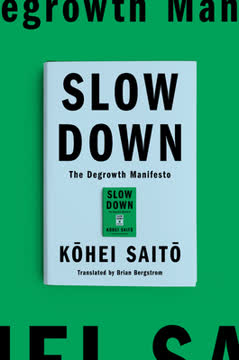
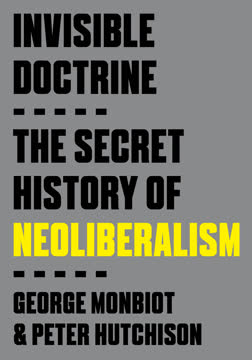
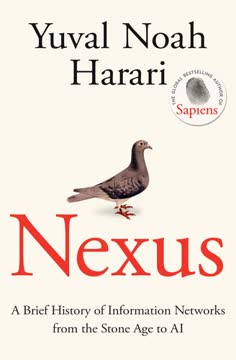
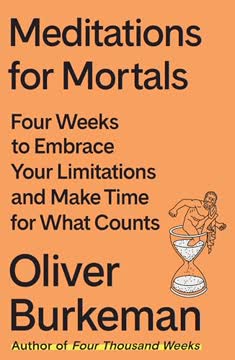
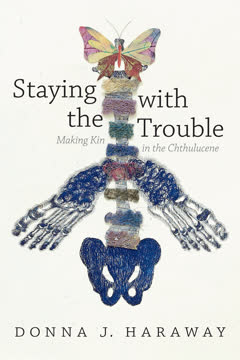
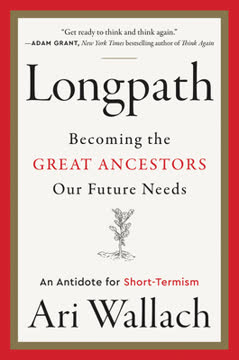
Download PDF
Download EPUB
.epub digital book format is ideal for reading ebooks on phones, tablets, and e-readers.
